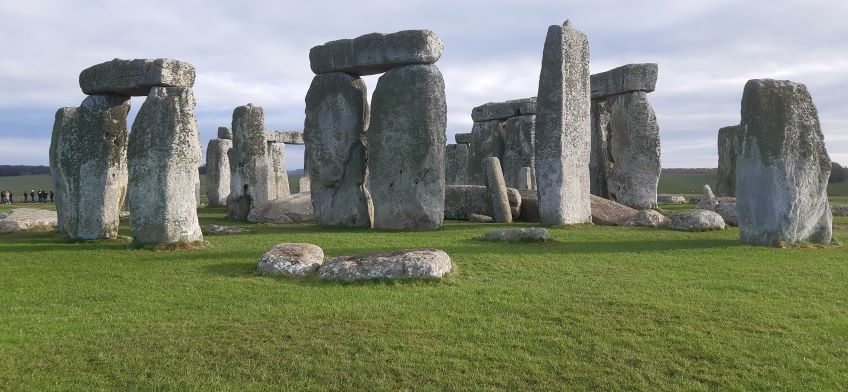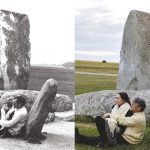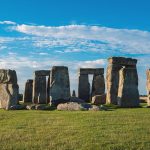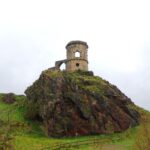It only took my wife Jenny and I a two-and-a-half-hour drive from our home in Monmouthshire to step back almost to the dawn of history and feast our eyes on one of the most famous heritage sites in the world, namely Stonehenge.
Now time travelling forward in a flash to the 16th century and the English Civil War, Parliamentary forces led by Commander in Chief Thomas Fairfax and his round head cavalry would sure to have noticed those ancient stones as they thundered past.
Fresh from their decisive victory over the Cavaliers at Naesby, they trotted in to nearby Amesbury where Thomas dismounted and established his overnight headquarters at The George Hotel which had already been welcoming weary travellers for the past one hundred years.
And so this ancient and historic hostelry which was recently acquired by the multi award-winning Coaching Inn group and given a circa £2million make-over, made the perfect base for our three day tour of the area.
Again, time travelling forward, pioneering aviators practising their flying skills on nearby Salisbury Plain often stayed over at The George, and if it’s old oak beamed walls could speak, they might well tell you that the hotel was first used as a temporary officers mess during the Great War.
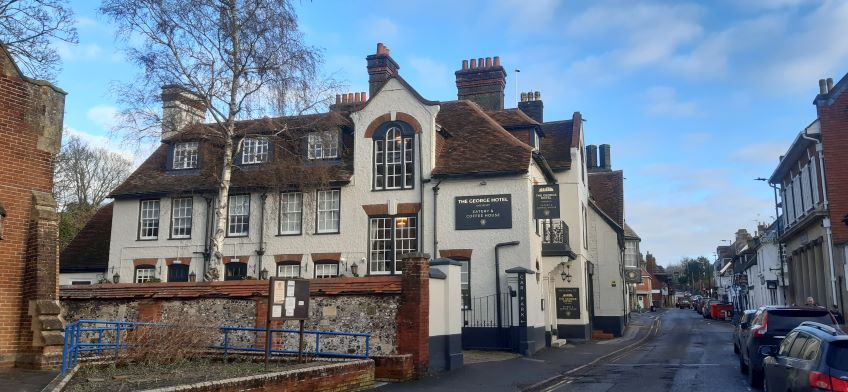
After an excellent dinner and a comfortable night, we drove out to the truly impressive Stonehenge Heritage Centre, only three miles away as the crow flies.
Here we visited the huge under cover exhibition area telling the story of the erection of the monument from 3000 to 1520 BC and I was particularly impressed by the slogan on one of the exhibitions which described Stonehenge “as a masterpiece of engineering built by a sophisticated people.”
Outside we met one of the one hundred strong team of volunteers who assist the English Heritage regulars in showing a million visitors a year from all over the world around the site.
I had always believed that all the giant stones had been transported all the way to the site from the Presili Hills in West Wales, but John explained that all the thirty-ton uprights had been dragged some nineteen miles from Marlborough, and it was the lighter, two to five-ton bluestones that had originated in Presili.
Meanwhile, the circle’s capping stones had been secured together a bit like Lego blocks or mortice and tenon joints with protrusions on the underside of the crossing stones slotting into holes on the uprights, he told us.
Then we set off on a brisk two kilometre walk to the stones which were truly impressive from the allowed short distance away. But the barriers are removed for the summer and winter Solstice with some 8,000 attending on June 21st.
Now it was time to hop on a shuttle bus back to the car park before driving the five miles into Salisbury to visit the magnificent cathedral, which at 404 feet has the highest spire in Britain.
Our Satnav guided us to the highly convenient Lush House pay and display car park and we popped into the nearby Orangery Cafe beside the fast-flowing River Avon for warming bowls of mushroom soup.
Then it was literally a five-minute walk to one of Britain’s most iconic cathedrals built between 1220 and 1258 and housing one of the thirteen copies of the Magna Carta.
It receives around 600,000 visitors a year many of whom will have also made the pilgrimage to or from nearby Stonehenge, with some perhaps making a connection between the spirituality of Iron Age man and those of far later Christian times.
Once inside our attention was quickly drawn to the world’s oldest mechanical working clock commissioned by Bishop Erghum back in 1386 and was the combined ingenuity of three makers across the North Sea at Delft in The Netherlands.
It told the priests when to pray and ensured that religious services started on time, but unlike much later clocks it has no dials or hands but tells the time by striking a bell on the hour.
The clock was originally held in a separate tower with the cathedral bells, but when this was taken down in 1790 it was moved inside for all to see.
Apart from seeing the clock and visiting the cathedral’s stunning circular Chapter House to view the Magna Carta, I came away with one other abiding memory of our time spent in that massive hallowed and whispered space surrounded and quite overwhelmed by all its history.
For we viewed the stone now worn down over hundreds of years where new boy choristers have their heads gently bumped seven times, while girls are tapped with a large prayer book, and then it was back to The George in time for tea.

When it opened in the 1740s the garden with its magnificent Palladian mansion at Stourhead, which we visited after a thirty-minute drive the following morning, was then described as a living work of art.
It was created by its owner Henry Hoare II who was one of a small group of gentlemen gardeners who used their large country estates to create a personal landscape.
One of the Grecian-style temples around the picturesque tree lined lakeside will be recognised by many as the scene of the first proposal of marriage made by Darcy to Miss Elizabeth Bennett in the 2005 film Pride and Prejudice.
We finished our mornings walk around the lake and grounds by calling into The Spread Eagle hostelry which is on the estate for a welcome drink and then climbed back up the zigzag path for a bowl of soup at the National Trust’s well-appointed restaurant.
Now it was time to return to our base at The George and to spend the remainder of the afternoon reading our library books in front of a blazing log fire.

